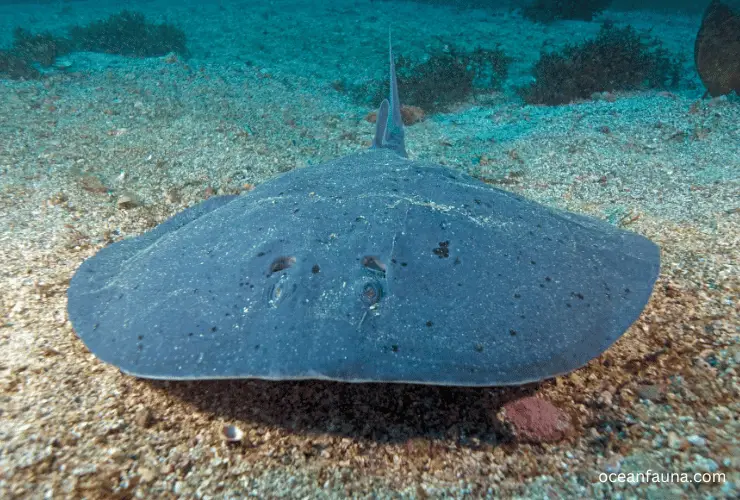The torpedo ray is an electric ray found in warm temperate and tropical oceans throughout the world. It is also known as crampfish, numbfish, or sea devil, due to its ability to produce a strong electric shock for self-defence.
There are so many queries about this electric ray that I will answer and describe in detail in this blog. So, read the whole article with patience and discover some amazing facts about this ocean creature.
About: Torpedo Ray
The Torpedo Ray, also known as the electric ray, is a species of fish belonging to the family Torpedinidae. These rays can be found in the warm coastal waters of the Atlantic and Pacific Oceans and the Mediterranean Sea.
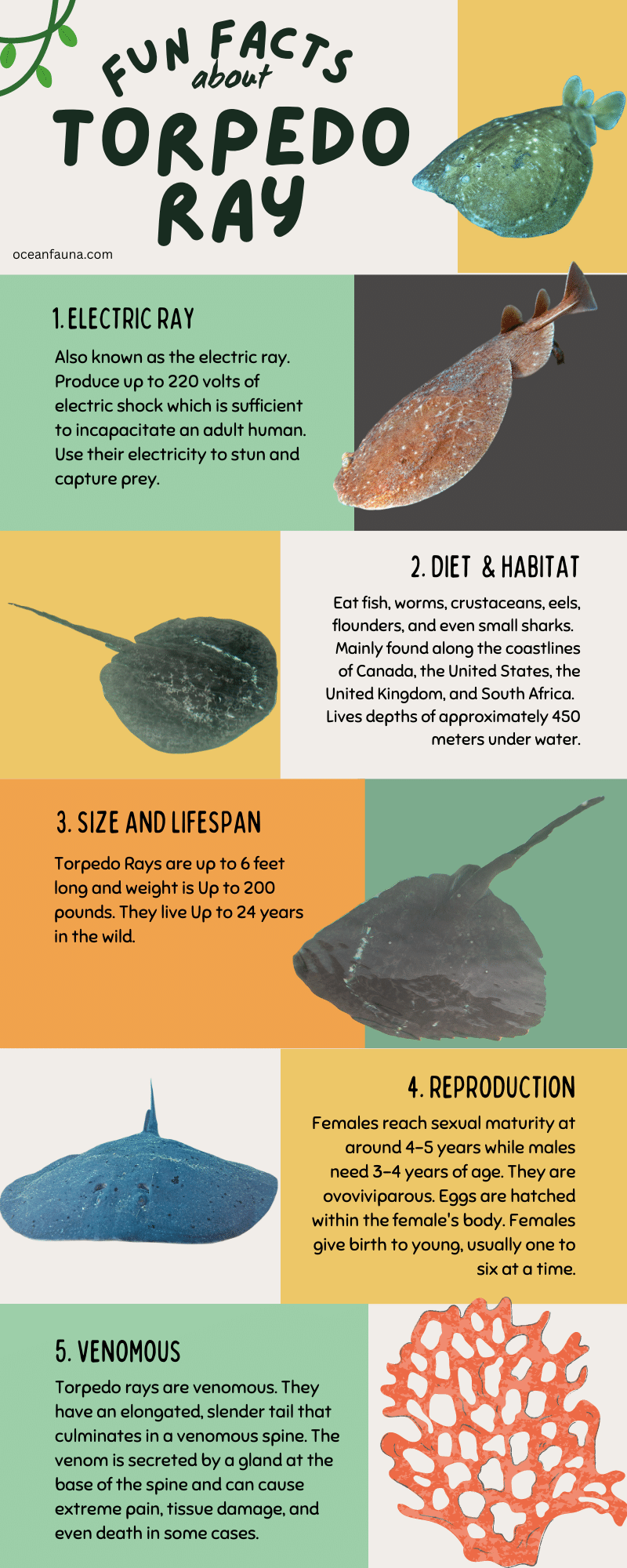
Torpedo Rays have a flattened, circular body shape and typically grow to be around 6 feet in length, although some individuals have been known to reach up to 7-8 feet. They are found at depths ranging from shallow waters to as deep as around 150 feet, usually in sandy or rocky bottoms.
Their electric organs, which are located on either side of their head, allow them to generate electric discharges of up to 220 volts, which can be used to stun prey or deter predators.
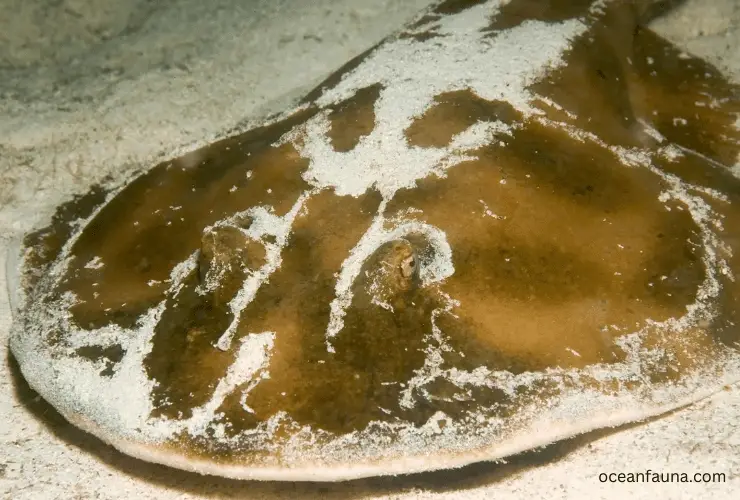
These rays are primarily nocturnal, spending their days buried in the sand or hiding under rocks and coming out to hunt at night. Their diet consists of a variety of bony fish, crustaceans, and cephalopods.
| Category | Information |
| Scientific name | Torpedo californica |
| Other name | Electric Ray, Cramp Fish |
| Family | Torpedinidae |
| Diet | Fish, crustaceans, cephalopods |
| Habitat | Temperate waters along the western coast of North America |
| Species Name | Torpedo californica, Torpedo fairchildi, Torpedo fuscomaculata, Torpedo marmorata, Torpedo panthera |
| Length | Up to 6 feet |
| Weight | Up to 200 pounds |
| Lifespan | Up to 24 years |
| Interesting Fact | They can produce up to 220 volts electric shock that can knock out its prey, and even humans |
| Threats | Overfishing and habitat destruction |
Although they have been known to attack humans, they are relatively rare and usually occur when a person accidentally steps on or touches a ray buried in the sand. While the electric shock can be painful and potentially dangerous, it is not usually fatal.
In addition to their defensive capabilities, humans have also used Torpedo Rays for their electricity-producing abilities. In fact, the scientific term “torpedo” is derived from the Latin word for “numbness” or “paralysis,” referencing the ray’s ability to immobilize prey with its electric shock.
Also Read: Cusk Eel: The Most Diverse Groups of Deep Ocean Creatures
In the past, these electrical discharges were used in medicine as a form of electrotherapy and as a method of electric fishing. However, in recent years, the use of electric fishing has been heavily regulated due to its potential negative impacts on marine ecosystems.
Why Is Torpedo Called An Electric Ray?
Torpedo is called an electric ray due to its unique ability to produce electricity. This fish is capable of generating electric shocks that can reach up to 220 volts, making it one of the strongest electric fish in the world.
This feature allows the torpedo to navigate in complete darkness, locate prey and defend itself from predators. It achieves this by having specialized organs called electrolytes that are stacked like batteries and can discharge electricity with precise timing and strength.
The electric discharge produced by a torpedo is powerful enough to stun or kill small fishes, invertebrates, and sometimes even humans. The name electric ray was given to this fish by naturalists who observed its electric properties during the 18th century.
This name distinguishes torpedoes from other rays, which do not possess the ability to produce electric shocks. Today, researchers are still studying the electric ray’s ability to produce electricity, hoping to unlock its potential for medical and technological applications.
Interesting Facts About Torpedo Rays
- Torpedo rays are one of the few species of fish that can generate an electrical current.
- The electric shock generated by a torpedo ray is up to 220 volts, which is strong enough to cause muscle paralysis in prey or predators.
- Torpedo rays are often seen alone or in small groups near the ocean floor.
- They feed on various invertebrates, including worms, crabs, and mollusks.
- Torpedo rays can live up to 24 years in the wild.
- The largest known electric ray is the Atlantic Torpedo Ray.
Anatomy of Torpedo Ray
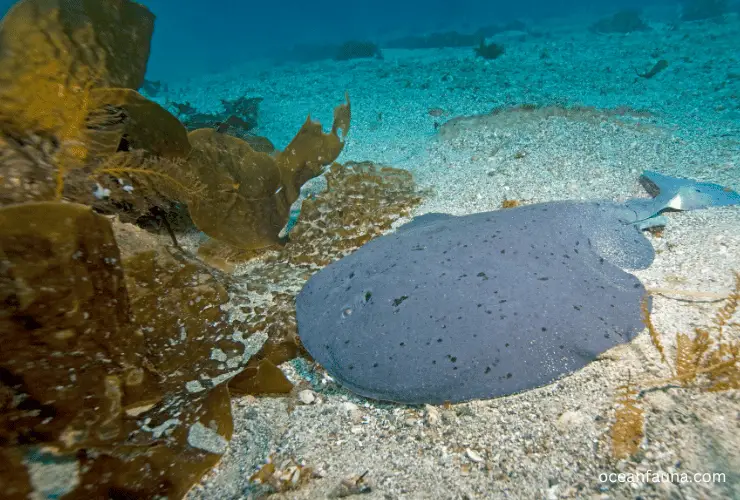
The anatomy of torpedo rays is equally fascinating and complex, with a variety of distinct systems that allow them to thrive in their aquatic environment.
Skeletal System
The skeletal system of torpedo ray is composed of a highly flexible cartilaginous skeleton that allows for rapid movement in the water. Unlike bony fish, which have rigid skeletons that can limit their mobility, the cartilaginous skeleton of torpedo rays allows them to move quickly and efficiently through the water. The skeleton is also reinforced with calcified plates that provide extra protection for the animal.
Muscular System
The muscular system of torpedo rays is also highly specialized and adapted for swimming and generating electric shocks. The pectoral fins of the ray are large and powerful, allowing them to propel themselves through the water with great speed and agility. These fins are also responsible for generating the electric field that the animal uses to hunt prey.
Nervous System
The nervous system of the torpedo ray is one of the most unique and interesting features of the animal. These creatures are able to generate electric fields using specialized cells called electrolytes.
These electrolytes are arranged in stacks that generate a high-voltage electric shock when the animal flexes its pectoral fins. The nervous system also plays a crucial role in controlling the animal’s movements and coordinating its responses to its environment.
Digestive System
The digestive system of torpedo ray is similar to that of other fish, with a mouth, esophagus, stomach, and intestines. However, these animals have adapted to a diet that includes a variety of small fish, crustaceans, and other marine creatures. They have powerful jaw muscles that allow them to crush the shells of crabs and other hard-shelled prey.
Respiratory System
The respiratory system of torpedo rays is also adapted for life in the water. They use gills to extract oxygen from the water, which is then circulated through their bloodstream. The gills are located on the animal’s underside and are protected by a bony plate called the operculum.
What Do Torpedo Rays Eat?
Torpedo rays are known to have a varied diet depending on their species. Their preferred prey may include fish, worms, and crustaceans. Interestingly enough, adult Atlantic rays tend to consume eels, flounders, and even small sharks. These predatory creatures often feed on invertebrates and small fish, which they hunt by lying in wait below the sand or other substrate.
One of the most fascinating things about torpedo rays is their ability to use their electricity to stun and capture prey. By generating a field of electrical energy, they can detect the nearby presence of prey, which they then immobilize with a powerful electric shock. This not only helps them capture food but also allows them to defend themselves against predators.
In addition to using their electrical powers to hunt for food, torpedo rays also have strong jaws and sharp teeth, which they use to grip and tear apart their prey. Once they have successfully caught a meal, they will often swallow it whole or tear it into smaller pieces to make it easier to consume.
Where Do Torpedo Rays Live?
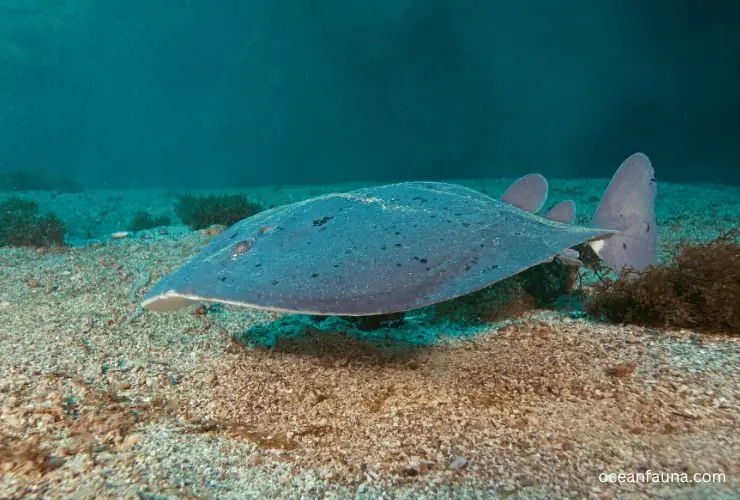
Torpedo rays, such as Atlantic torpedo rays, are found along the coastlines of Canada, the United States, the United Kingdom, and South Africa. However, they have also been known to venture out into the open ocean, where they can be found at depths of approximately 450 meters (1,475 feet).
On the other hand, Pacific torpedo rays are typically found in the Pacific Ocean, where they inhabit sandy bottoms around rocky reefs and kelp beds. They are known for their ability to blend in with their surroundings and can sometimes be difficult to spot.
The Gulf torpedo is the most widespread of the electric rays in the western Indian Ocean, with a patchy range that extends from South Africa to Somalia and the Red Sea. These rays are found in a variety of habitats, including shallow waters near the shore to deeper waters offshore.
Overall, torpedo rays are a diverse group of fish that can be found in a wide range of environments, from coastal areas to the open ocean. While some species prefer sandy bottoms and rocky reefs, others can swim in deep waters far from land.
What Is the Lifespan of Torpedo Rays?
Depending upon the species, the lifespan of torpedo rays is at least ten years and can potentially extend up to 24 years. The lifespan of these creatures is relatively moderate compared to other marine animals.
However, lifespan can vary significantly based on several factors, such as habitat, diet, and environmental conditions. For instance, individuals living in captive environments have been known to live longer than their counterparts in the wild.
Additionally, the age of maturity can also play a role in lifespan, as females reach sexual maturity at around 4-5 years of age while males reach maturity at around 3-4 years of age.
Several other factors can also impact the lifespan of these rays, including pollution, overfishing, and habitat degradation. These factors can lead to an increased risk of disease, predation, and reduced food availability, thereby reducing the lifespan of the creatures.
Nonetheless, the average lifespan of torpedo rays is relatively impressive, and it is crucial to protect these creatures to ensure their survival and longevity.
How Do Torpedo Rays Reproduce?
Torpedo rays have a complex reproductive system that involves internal fertilization and live birth. They are ovoviviparous, meaning their eggs are hatched within the female’s body, where they receive nutrients from the yolk sac until they are ready to be born.
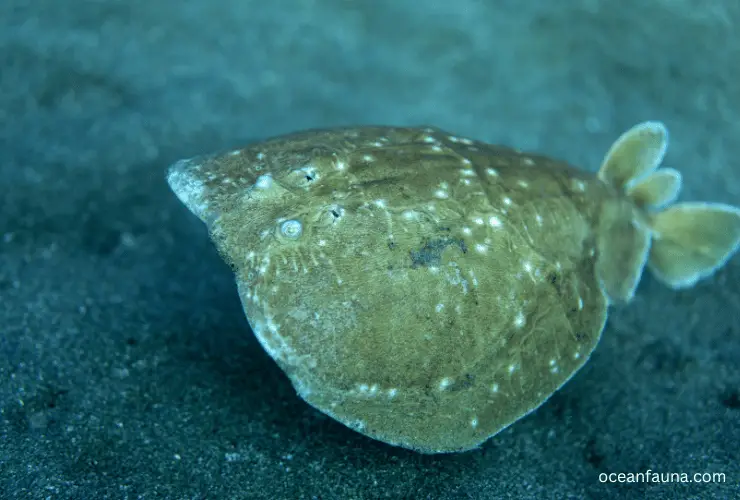
Male torpedo rays have claspers, which are specialized reproductive organs used during mating to transfer sperm into the female’s reproductive tract. Female torpedo rays have a pair of oviducts that connect the ovaries to the cloaca, through which the young are born.
During mating, the male torpedo ray inserts his claspers into the female’s cloaca, where they release sperm. Internal fertilization occurs as the sperm swims up the female’s oviducts to fertilize the eggs. The fertilized eggs develop inside the mother’s body, where they receive nourishment from the yolk sac until they are born.
After a gestation period of several months, female torpedo rays give birth to live young, usually one to six at a time. The newborn rays are fully formed and capable of swimming and hunting independently.
Are Torpedo Rays Dangerous?
Torpedo rays are considered to be dangerous due to their ability to deliver a powerful electric shock. These rays can generate shocks of up to 220 volts, which is sufficient to incapacitate an adult human. Divers are specifically warned to avoid contact with these animals to minimize the risk of injury.
Besides their electrical capability, torpedo rays can also be dangerous due to their long and slender tails that bear one or more sharp, saw-edged, venomous spines, which can cause painful wounds.
In addition to the potential for severe electrical shock, an encounter with a torpedo ray could result in painful bites or stings that can lead to infections or other medical complications.
Furthermore, torpedo rays are known to be quite aggressive when they feel threatened, particularly during mating season. These animals may charge at divers or attempt to ram them with their powerful bodies, which can result in serious injuries.
Are Torpedo Rays Venomous?
Yes, torpedo rays are venomous. They have an elongated, slender tail that culminates in a venomous spine. The venom is secreted by a gland at the base of the spine and can cause extreme pain, tissue damage, and even death in some cases.
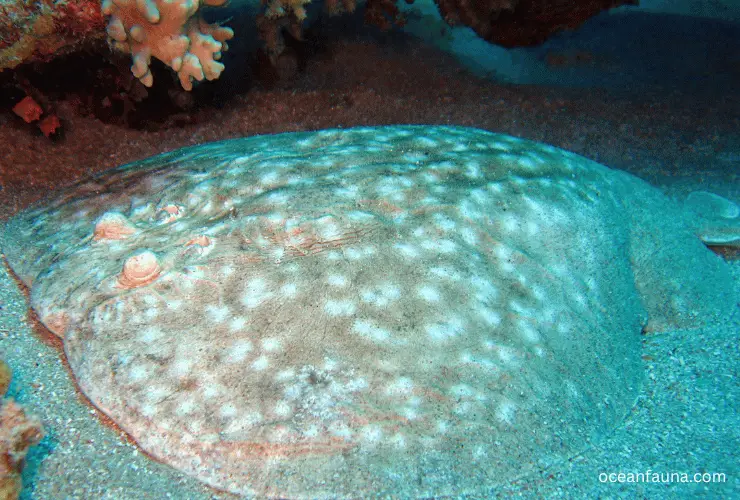
Torpedo rays belong to the family Torpedinidae, which includes around 60 species of electric rays. These rays are typically found in coastal waters and can grow up to six feet long. They have a round body shape and are flattened, resembling a pancake.
The venomous spine of the torpedo ray is used as a defense mechanism against predators or threats. When the ray feels threatened, it will whip its tail around to strike the attacker with the venomous spine. The venom is a neurotoxin that can cause paralysis and respiratory failure in animals that are not immune to it.
If a human is stung by a torpedo ray, the venom can cause severe pain, swelling, and muscle weakness. In some cases, the toxin can even lead to heart failure or death. Treatment for a sting from a torpedo ray generally involves soaking the affected area in hot water and seeking medical attention if necessary.
What Is the Conservation Status of Torpedo Rays?
The conservation status of torpedo rays varies depending on the specific species. The International Union for Conservation of Nature (IUCN) has assessed the conservation status of several torpedo ray species.
For example, the common torpedo ray (Torpedo torpedo) is listed as vulnerable, as it is a slow-growing species that can suffer from overfishing. The Chilean torpedo ray (Torpedo marmorata) is listed as Least Concern, as it is not yet facing a significant population decline.
The Taiwanese Pelagic Torpedo is categorized as Near Threatened due to a decrease in population caused by unsustainable fishing practices.
Overall, the conservation status of torpedo rays is of great Concern due to overfishing and degradation of their coastal habitat. Increased awareness of the potential threats facing these animals and sustainable fishing practices are key for protecting them in the future.
FAQs
How do torpedo rays use electricity?
Torpedo rays have the ability to produce and regulate electrical charges voluntarily. By means of muscular tissues located in two kidney-shaped glands on each side of the head, they can generate currents that can deliver a powerful electric shock capable of knocking down an adult. The combined weight of these glands accounts for one-sixth of the ray’s total body weight.
What is so special about the torpedo ray?
Torpedo rays can produce electricity ranging from 8 volts to 220 volts, depending on the species, which is the most special thing about them. They can use this electricity to stun their prey, such as fish or invertebrates, and protect themselves from predators. The shock is strong enough to paralyze the prey for a few seconds, allowing the ray to swallow it whole.
Conclusion
Now you have detailed information about Torpedo rays or electric rays. If you have any further queries about them, keep your question in the comment section. I will answer them as soon as possible.

